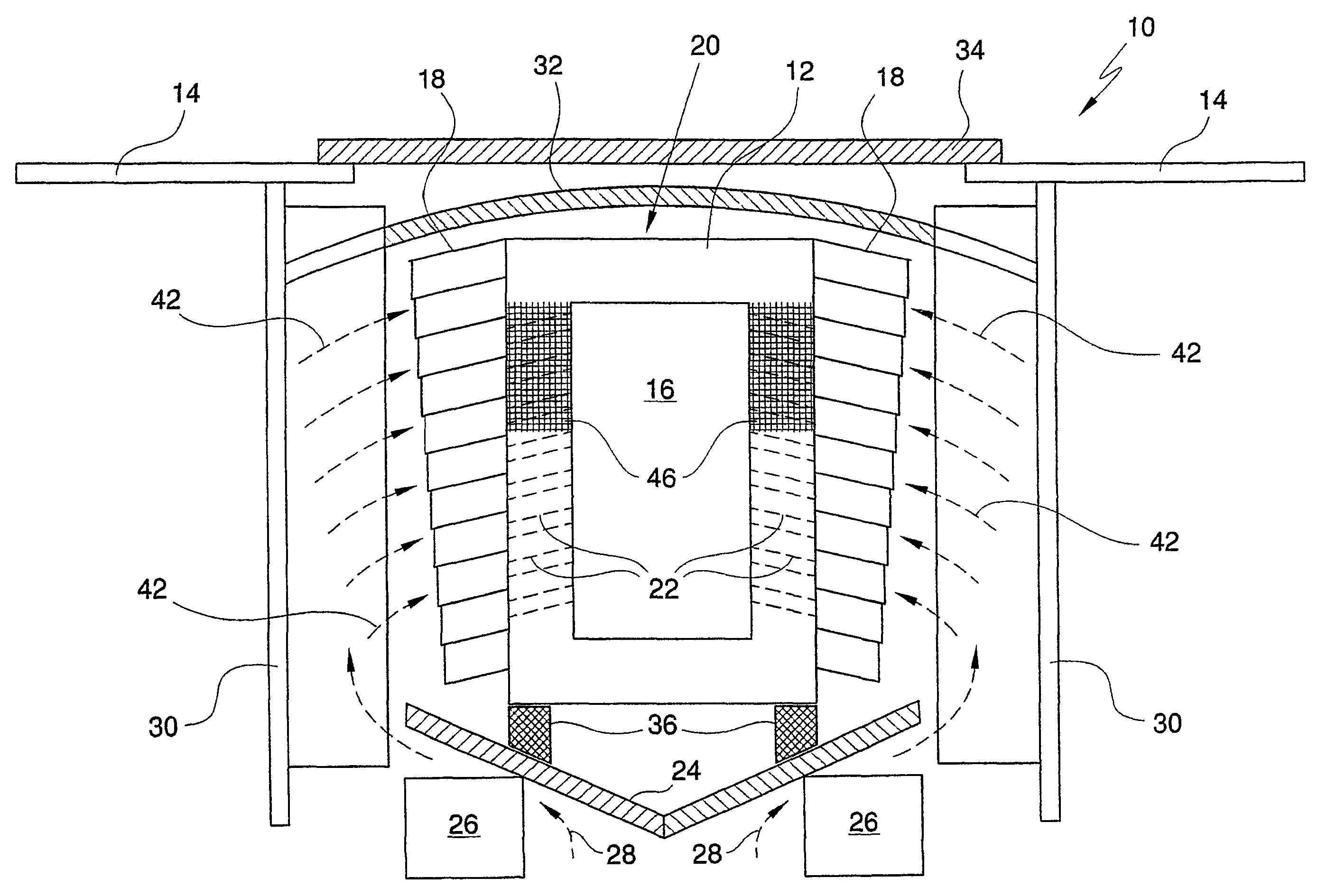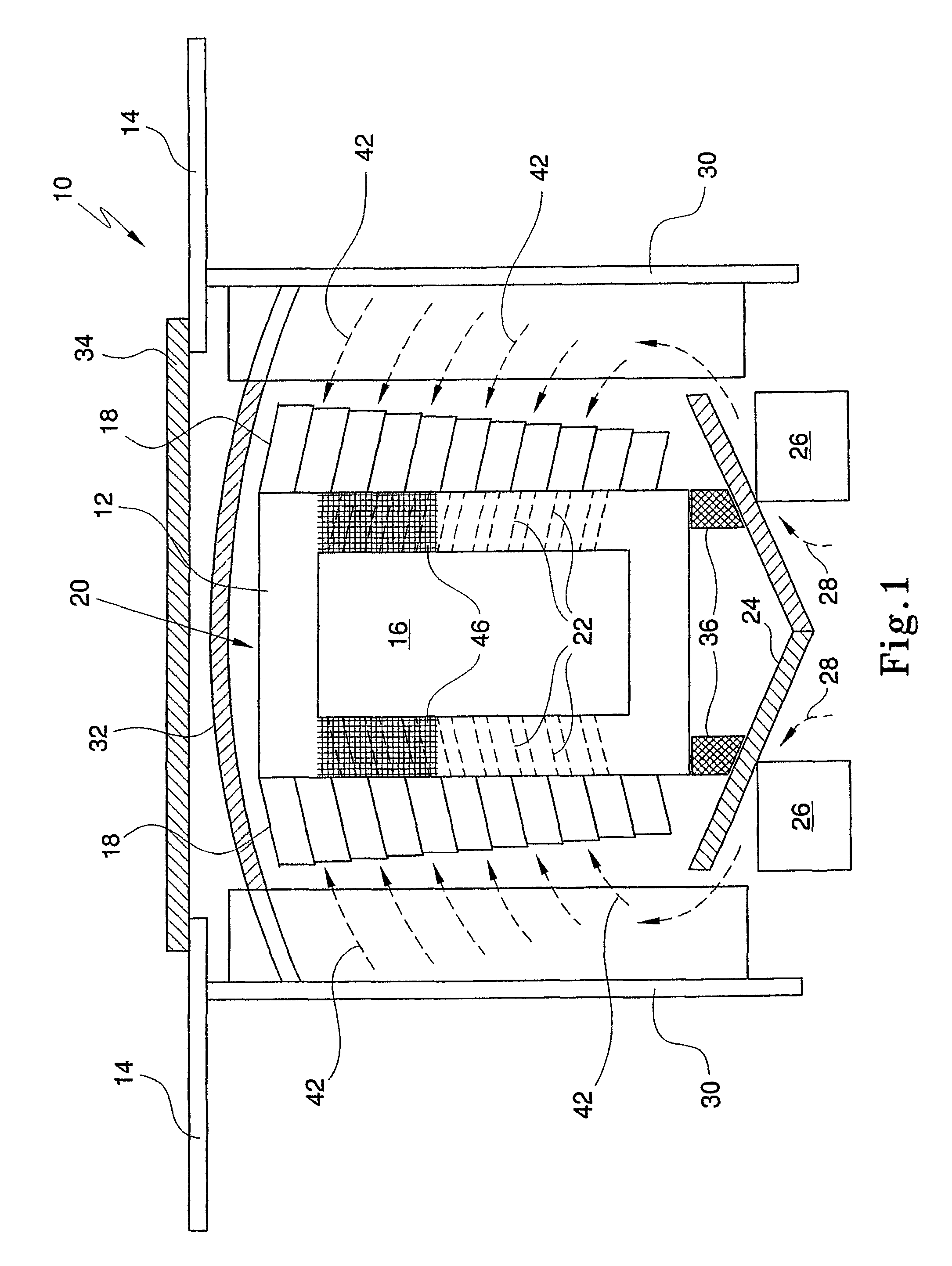Heat exchanger
a heat exchanger and heat exchanger technology, applied in the field of heat exchangers, can solve the problems of large amount of compressed air, high cost, and high noise and dust hazards for operators, and achieve the effect of enhancing heat transfer and reducing pressure drop
- Summary
- Abstract
- Description
- Claims
- Application Information
AI Technical Summary
Benefits of technology
Problems solved by technology
Method used
Image
Examples
first embodiment
[0077]In FIGS. 1 to 6 of the drawings, reference numeral 10 generally designates a heat exchanger, in accordance with the invention. The heat exchanger 10 includes a conduit 12 which, in use, is arranged between two bodies, in the form of furnaces, illustrated schematically at 14, to be cooled. The conduit 12 defines a passage 16.
[0078]A heat transfer arrangement in the form of a plurality of spaced fins 18 is attached to an exterior surface of the conduit 12. An assembly comprising the conduit 12 and the fins 18 is referred to below, for ease of explanation, as a duct 20.
[0079]In the embodiment illustrated in FIG. 1 of the drawings, the fins 18 are vertically spaced and substantially horizontally disposed or at a slight angle to the horizontal.
[0080]The duct 20 is of a heat absorbing material. More particularly, the duct 20 is of an aluminium material and is coated with a heat absorbing material to enhance the heat absorption characteristics of the duct 20. For example, the duct 20...
second embodiment
[0103]Referring to FIGS. 7 to 14 of the drawings, the heat exchanger 10 is illustrated and described. With reference to the previous drawings, like reference numerals refer to like parts, unless otherwise specified. In the example shown in FIG. 7 of the drawings, the heat exchanger 10 comprises two banks 60 of heat exchanger sections 62. The heat exchanger sections 62 are connected via duct branches 64 and duct connectors 66 to the conduit 12 defining the passage 16. In the version shown in FIG. 7 of the drawings, the conduit 12 is maintained at basement level and exits outside a furnace building out of a work zone of operators of the furnace. Thus, air heated in the heat exchanger 10 is discharged, as indicated by arrow 68, through the passage 16 of the conduit 12.
[0104]Referring to FIG. 8 of the drawings, once again, the heat exchanger 10 is made up of two banks 60 of heat exchanger sections 62. In this embodiment, each bank 60 is bifurcated to have two stacks 70, one at each end ...
PUM
| Property | Measurement | Unit |
|---|---|---|
| temperatures | aaaaa | aaaaa |
| width aspect ratio | aaaaa | aaaaa |
| heat absorption | aaaaa | aaaaa |
Abstract
Description
Claims
Application Information
 Login to View More
Login to View More - R&D
- Intellectual Property
- Life Sciences
- Materials
- Tech Scout
- Unparalleled Data Quality
- Higher Quality Content
- 60% Fewer Hallucinations
Browse by: Latest US Patents, China's latest patents, Technical Efficacy Thesaurus, Application Domain, Technology Topic, Popular Technical Reports.
© 2025 PatSnap. All rights reserved.Legal|Privacy policy|Modern Slavery Act Transparency Statement|Sitemap|About US| Contact US: help@patsnap.com



